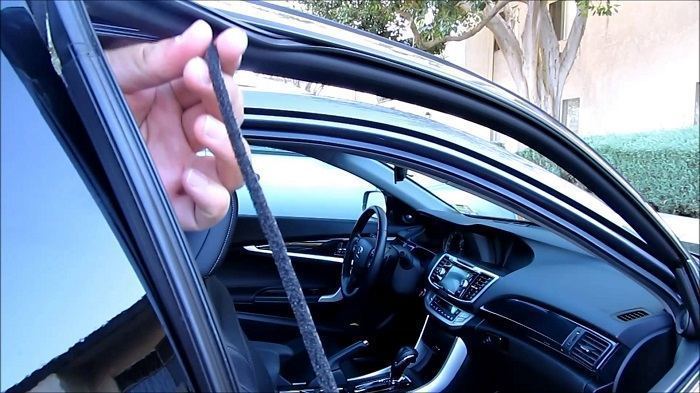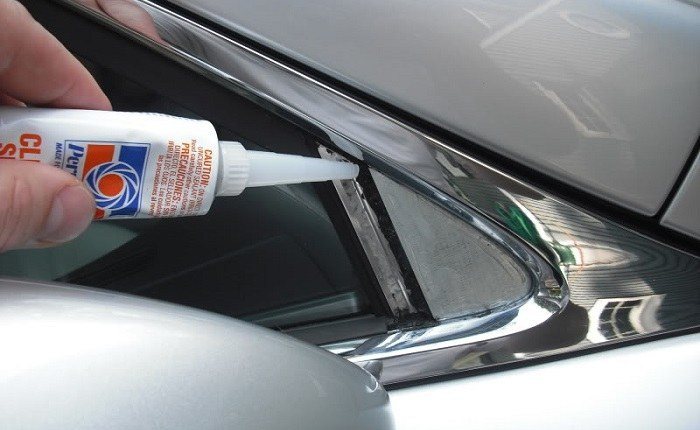by Joshua Thomas
Wind noise can be distracting and annoying. Besides making it almost impossible to listen to your favorite music when driving, sometimes it can also make it hard to talk to someone seated next to you on the passenger seat.
This noise is the whooshing sound that you will hear when driving, and it manifests as a high-pitched squeal of air under high pressure that is trying to escape as you cruise at high speeds on the highway.
Wind noise can come in through the tiniest holes and gaps in the vehicle. But, like other common noises like road-noise, it is still possible to reduce it, and here we show you how and also explain some of the main causes to help you prevent it.
Contents

Wind noise will typically occur as a result of a combination of different factors, and so in many instances, it is not possible to narrow down the noise to one cause.
Also, the causes will differ from one vehicle to the other, given the differences in vehicle size and shapes. But, the following are the most common causes, and the chances are at least one of them is what is causing that annoying wind noise in your vehicle.
Door seals are what will keep elements such as water and wind out of your car. Hence, if they are not working properly or they are worn out, wind noise is just one of the things you are likely to encounter.
With worn out door seals, the wind will be able to rush into the vehicle when traveling at high speeds, and because the space between the door and seals is tiny, a high-pitched whooshing sound is created.
If your vehicle is not built with acoustic glass, it will not be very effective at blocking air noise. An acoustic glass will have two glass panels and a layer of vinyl between them, which besides making it lighter also enhances its effectiveness at blocking out wind or air noise.
For vehicles that use non-acoustic windshields, the glass will not be able to block out most of the air noise when driving at high speeds, which creates a noisy environment inside the car.
Air pressure is another common cause of wind noise because as your vehicle moves down the road, it will create changes in air pressure.
The inside of the car will have higher pressure than the outside and air will hence try to find a way to escape outside. As the air tries to escape through the door openings, it will create wind noise.
The kind of vehicle that you drive will also affect the wind noise because both its size and design will influence the level of wind noise you get.
For example, the design of the chassis has a huge impact on how the wind will flow along the bottom of the vehicle, and hence also affect the amount of wind noise generated.
Also, other things like larger side mirrors will pick up more wind noise. And the larger surface hitting the wind in larger vehicles also leads to more wind noise.
Sometimes wind noise will result from factors beyond your control and will have nothing to do with the condition of your vehicle, and hence there is little you can do.
It should be obvious that when there are strong winds more noise will be created in your vehicle when driving at high speeds. With that said, an adequately weatherproofed vehicle will be susceptible to less wind noise.

Because several things can cause wind noise, how you reduce it will ultimately depend on your specific situations. Hence, no one solution will work for everyone. However, there are a few general steps that will work for most motorists when dealing with wind noise.
Step 1: Locate Wind Noise Cause
Before you get to the wind noise reduction part, the first step is always to try and locate the source of the noise, because you cannot deal with noise that you do not know where it is coming from.
As the air tries to rush out of your vehicle, it will always look for areas that offer the least resistance. Hence, to make it easy to pinpoint the noise source, you should inspect areas that are more prone to having gaps such as window and door seals, around the edge of the sunroof and the corners of the cabin.
While driving at a moderate speed, you have to listen keenly where the noise is coming from and to do this, you need to keep the vehicle interior as quiet as possible. In case you find it hard to tell, you should carry a few passengers to help you establish the source of the wind noise.
Step 2: Inspect and Repair/Replace Worn Out Seals
The chances are that the source of the wind noise is worn out seals, and hence the next step after locating the cause of the noise will be to inspect the seals further and replace them.
As the weatherstripping and window seals wear out, they will leave small holes and gaps, which is where the air will always try to escape through and hence creating that annoying noise.
In some instances, the weatherstripping will still be in good shape and slightly out of place or unattached. In such instances, you will only need to restore it to the original state with some adhesive. But even if you have to replace it, this should also be quite easy.
Step 3: Inspect the Doors
With the weatherstripping and seals in place, the next important step will be to inspect the doors for deformities. It is also possible for the doors to get warped or damaged and hence leaving gaps that can cause wind noise.
The easiest way to inspect a door is to check how it closes, and if it leaves gaps then this might be an indication that there are small bumps that often result from a mechanic using a little too much solder when repairing it. In such instances, a metal file should be enough to help file down the lumps.
Some lumps might require hammering down in case the file does not do a good enough job. But if you get to this point, the wise idea would be to take the vehicle to a professional mechanic to avoid causing more damage.
Step 4: Check and Repair any External Damages
Any gaps and holes on the exterior surface of the vehicle can also provide just enough space for wind to squeeze in and out and hence leading to wind noise. Consequently, the next step is to check and repair any damages on the vehicle's exterior.
Besides accidents, holes in the exterior surface can also occur as a result of other things such as missing emblems. Some holes can be small and easy to fix while others might require the skills of a professional.
If you cannot find any holes, this does not necessarily mean there are no spaces for the wind to pass through. Check for signs of corrosion and rust as the rusted areas will often also have tiny gaps that are enough to cause wind noise.
Also, you need to check other things like cracks in the windows and windshield which might not look like an obvious sign of wind noise but if the crack is wide enough, then air can pass through and cause noise. And depending on the size of the crack or chip in the glass, sometimes you may need to replace the glass because not all can be fixed.
Step 5: Soundproof the Vehicle
While the steps above will almost always be enough to solve the wind noise problem, in some situations, you may still need to do more. And this often means having to soundproof your vehicle.
Installing sound-deadening mats is one of the most effective ways of soundproofing your vehicle as they are designed to absorb most of the sound and vibrations, and hence reducing noise transmission greatly.
The best thing about deadening mats is that you can use them to dampen noise almost anywhere from the floors and doors to the trunk. But, to get the best results from them, you need to make sure that you install them directly on the car's metal by first pulling out the door panels or carpets depending on where you are placing them.
While the steps above should be enough to help you deal with wind noise, they are not the only option as there are also a few other effective ways of reducing wind noise. And they include the following.
1. Clear out the door drain holes to allow for smooth air circulation.
2. Install wind deflectors to keep the wind away from the car's weatherstripping.
3. Use a sound deadening spray to minimize noise transmission.
4. Replace your regular windshield with an acoustic one.
Wind noise is one of those annoyances that you will not want to live with as it will make your drives relatively less pleasant. Besides not being able to listen to your favorite music, you will also not get that quiet and peaceful environment you yearn for when driving.
But, as annoying as it might be, the good news is that it is still possible to eliminate or at least reduce it significantly if you know what to do. And while there are different methods that you can use, they will always start by first identifying where the noise is coming from.
There are different wind noise causes from worn-out seals to gaps and holes in the vehicle's exterior, which means that keeping your vehicle in good shape through regular inspection and maintenance is often enough to prevent and deal with wind noise.
 |
 |
 |
 |

About Joshua Thomas
Joshua Thomas just simply loves cars and willing to work on them whenever there's chance... sometimes for free.
He started CarCareTotal back in 2017 from the advices of total strangers who witnessed his amazing skills in car repairs here and there.
His goal with this creation is to help car owners better learn how to maintain and repair their cars; as such, the site would cover alot of areas: troubleshooting, product recommendations, tips & tricks.
Joshua received Bachelor of Science in Mechanical Engineering at San Diego State University.